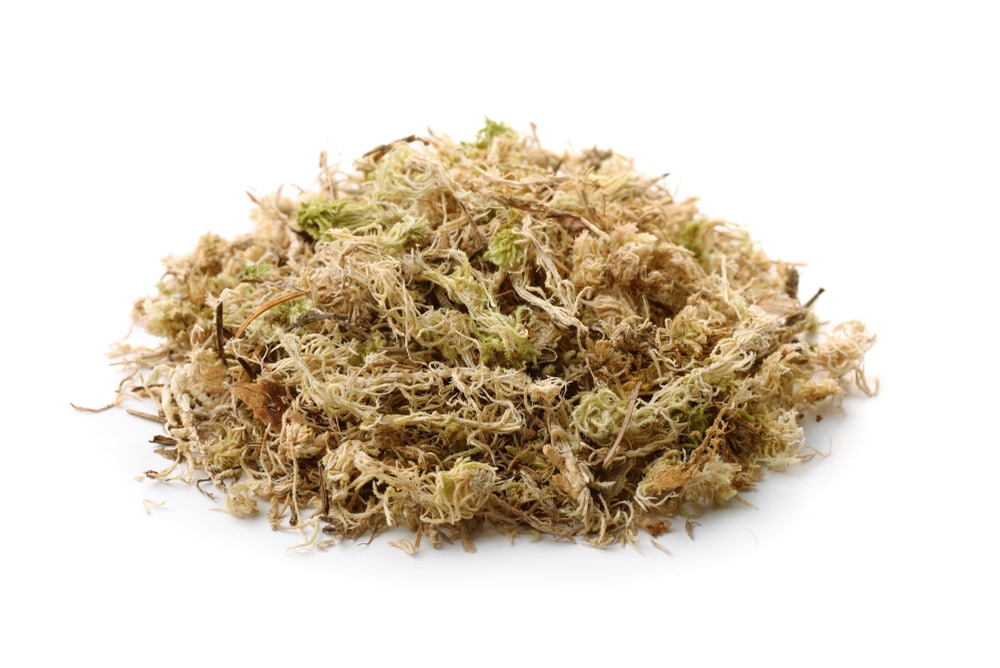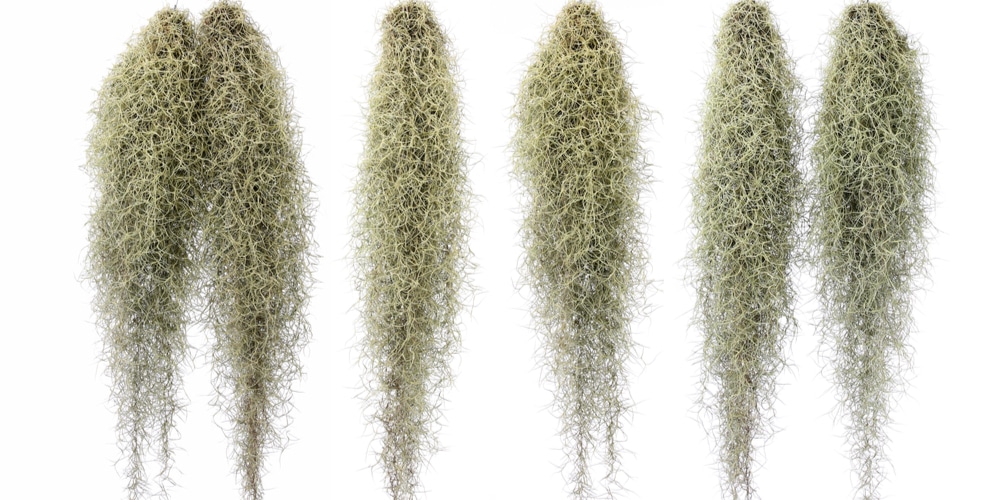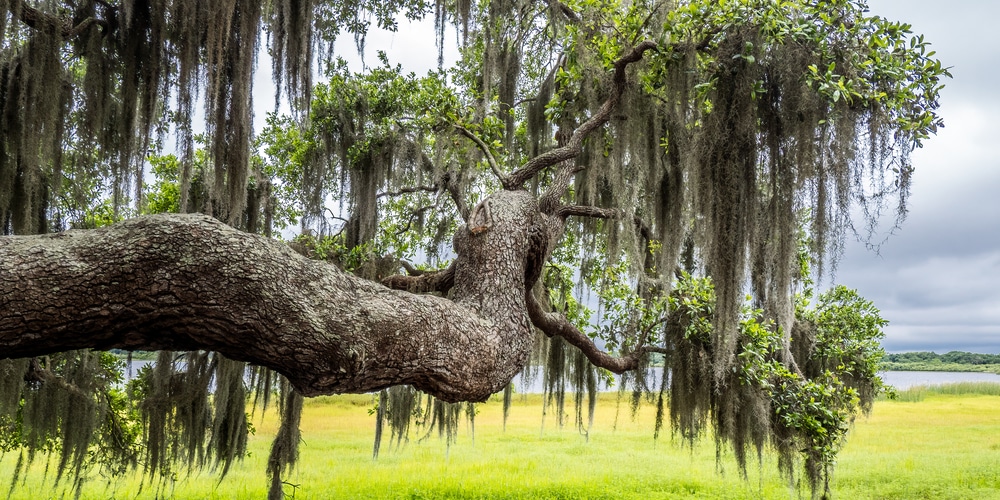Although both Sphagnum moss and Spanish moss are often confused with one another, there are several key differences between the two. Spanish moss is commonly found growing on the branches of trees, while Sphagnum moss grows close to the ground and eventually forms peat. This article will compare sphagnum moss vs Spanish moss and discuss the differences and similarities to help you with moss identification. We’ll also tell you about some of the common uses of mosses.
What is sphagnum moss?

Sphagnum moss refers to a plant genus rather than a single moss species. These types of moss are also commonly referred to as peat moss, and they grow in bogs and other wetland areas.
Sphagnum moss is often used as a soil amendment for succulents and orchids as it helps to create light and well-draining soil as the moss is sponge-like. It can also be used in decorative displays such as terrariums.
Sphagnum moss has a distinctive greenish-yellow color, and its leaves are covered in tiny pores. It gets its common name from the Greek word for “marsh” or “swamp”. There are approximately 380 varieties of sphagnum moss growing across the globe.
What is Spanish moss?
Spanish moss has the botanical name Tillandsia usneoides and is an epiphytic flowering plant, which means that it thrives by attaching itself to trees and shrubs. It is native to the United States, Asia, and South America and often grows on trees in humid environments. This type of moss is most common in tropical or subtropical regions.
Spanish moss gets its common name from its resemblance to the moss that grows on the roofs of Spanish-style houses. The plant is gray or green in color, and its leaves are long, thin, and curly. The leaves can become quite long, growing to between 0.8 and 2.4 inches long.
Spanish moss does not form peat, and it is not a true moss. In ancient times it was used as a mattress stuffing. Some people like the look of Spanish moss on their trees, while others see it as an invasive species and try to remove it. While Spanish moss doesn’t kill trees it can look unsightly.
Sphagnum Moss vs Spanish Moss: Similarities
Both plants are greenish and have a rough, sponge-like texture. They can both be used in floral arrangements and can also be added to house plant soil. You can buy decorative mosses from garden centers or home improvement stores. These can be added to terrariums or other displays.
Sphagnum Moss vs Spanish Moss: Differences
Sphagnum moss is native to Europe, Asia, and North America, while Spanish moss is found primarily found on trees in the southeastern United States. Sphagnum moss forms layers of peat in bogs, while Spanish moss does not form peat. Sphagnum moss is easily identifiable as a moss as it grows close to the ground, while Spanish moss looks stringy and is sometimes confused with lichen.
While the mosses are both green in color they are slightly different shades. Sphagnum moss is a green-brown color, while Spanish moss is a silvery green. Some varieties of Sphagnum moss are becoming rarer, and conservation groups are starting to preserve the species. Peat and mosses now need to be ethically harvested to preserve ecosystems.
Final thoughts
Both Sphagnum moss and Spanish moss are interesting plants that have a lot of similarities but also some key differences. If you’re trying to identify moss in your yard, it’s most likely to be Spanish moss if it’s hanging from trees or other structures, while moss that grows on the ground is a variety of sphagnum moss.

